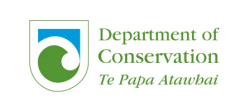Wild aquatic birds carry a panoply of viruses and act as major vectors of virus distribution at a global scale. Although central to biosecurity, the role that such birds play in the transmission of viruses in Aotearoa, and how this may impact human and animal health in the near future, is unclear. These viruses often jump to new hosts and cause disease.
For example, wild aquatic birds such as waterfowl serve as natural reservoirs for influenza A virus, a strain of which is currently killing millions of birds with multiple spillovers to non-avian hosts, including humans. Yet we know little about where, when and how such viruses will emerge here, their reservoir hosts, nor how to prevent them.
This lack of knowledge, combined with very limited surveillance and resources, leaves Aotearoa entirely unprepared for the introduction of highly pathogenic avian influenza virus and its inevitable impacts on wildlife, agriculture and potentially human health.
Using an innovative combination of genomics technologies such as metagenomics, molecular epidemiology and environmental DNA (eDNA), we will determine the transmission networks and evolution of avian influenza strains already present in Aotearoa, demonstrate the use of large-scale environmental sampling for disease surveillance, and quantify the disease risk of such viruses to public health.
>> PROJECT STARTED - 1st March 2024
>> IMPACT CASE STUDY (PDF) March 2025










